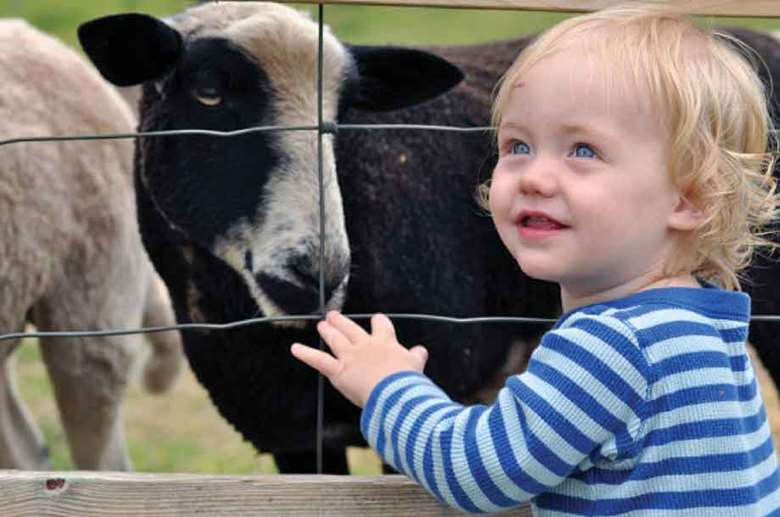EYFS Activities: Essential experiences… pets
Penny Tassoni
Monday, February 20, 2017
Keeping a pet or having an animal visit them is beneficial for children. Penny Tassoni offers some advice to settings

With an increasing number of families living in rental accommodation, fewer children are able to keep or be involved in the care of a pet. This is a shame as young children often enjoy being in close contact with animals and there are huge learning opportunities to be gained from the experience. This is one area where early years settings can step in.
While settings have an important role to play in ensuring that the next generation know how to care for, respect and stay safe around animals, any decisions about having a nursery pet or visits from pet owners must give priority to animal welfare – the RSPCA strongly discourages having school pets because of the potential stress to the animals.
BENEFITS
While your setting may not be able to keep a pet, even bringing in pets for children to see and care for even on a temporary basis can support their development.
Language development Pets can provide a great focus for shared conversations with adults and between children. Simply looking at what an animal is doing can be a great topic of conversation and an opportunity for further questions. Children will also learn the specific vocabulary related to the particular pet, including its features and items involved in its care – for example, ‘muzzle’, ‘fur’, ‘paw’.
Physical skills As well as practical hand-eye co-ordination skills such as filling up water bowls or measuring out feed, children also learn to control their movements around pets. Very quickly, children learn that with some animals they must not make sudden movements or that they must be gentle when touching an animal.
Confidence and self-esteem Children can feel very special as they move around, care for and touch pets. This in turn can help them to gain in confidence and self-esteem.
Supporting transitions For children who are new to a setting or whose lives are in disarray, a pet can be a reassuring presence. It can make children feel that they are not alone.
PLANNING A PROGRAMME
While not all early years settings will have the space, time or inclination to take on a demanding pet, a ‘can-do’ approach is needed. This might mean researching pets that are low maintenance such as fish or guinea pigs and/or thinking about how pets can be invited in.
Even if you have a full-time pet on your premises, you might still think about planning a programme so that children can see other pets. It might be that pets can be invited in or you can visit a rescue centre or pet shop. The idea would be for children over time to see several types of pets from reptiles to mammals through to fish and birds.
If you decide to take the plunge and get a pet for your setting, it is worth talking it through with a vet or getting information from an organisation such as the RSPCA (www.rspca.org.uk) or the PDSA (www.pdsa.org.uk). Remember that keeping a pet or inviting one in will require a risk assessment, but as many settings keep pets, this is clearly not a deal-breaker.
TIPS FOR VISITING PETS
Make sure you have done your homework about the type of animal that will be visiting your setting. How used is the animal to being with children? When in the day is it the most active? How long should the visit be? Think about where it will go and how you will meet its care needs.
Health and safety Find out if any children have known allergies or any phobias to any animals before the animal comes. Think about how you will maintain hygiene and also keep the pet happy and relaxed. This might mean limiting the amount of time that it spends with you, and also the number of children who see it.
Preparing children As noise and high levels of stimulation are often problematic for animals, it is important to prepare children so that they know how to behave around them.
Group size To maximise the learning experience and prevent the pet from becoming stressed, take children in pairs or very small groups to be with the pet. Large groups are likely to be overwhelming for many animals.
Building on the experience There are many ways of building on first-hand experiences around pets. You could invite a vet in or create an animal hospital or role-play pet shop. Pets can also be a starting point for many literacy activities. This might include writing instructions about how to look after the pet, as well as making books with the children about the pet.
HOME LEARNING
One of the great things about inviting a pet in or keeping one is that it can help practitioners make connections with parents.
Children may want to take home photos of the pet or bring their parents in to see it. It may be that parents can build on their children’s interest at home by sharing books about animals or finding out more about the setting’s pet online.
BOOK CORNER
Continue the pet theme into your book corner. Countless picture books feature families’ beloved, and often troublesome, pets. Try, for example, The King Cat by Marta Altes, The Great Pet Sale by Mick Inkpen, Courtney by John Burningham, Katie McGinty Wants a Petby Jenna Harrington, Oliver and Patch by Claire Freedman, The Perfect Present by Fiona Roberton and The Diabolical Mr Tiddles by Tom McCloughlin.
[asset_library_tag 1425,Download the PDF]




